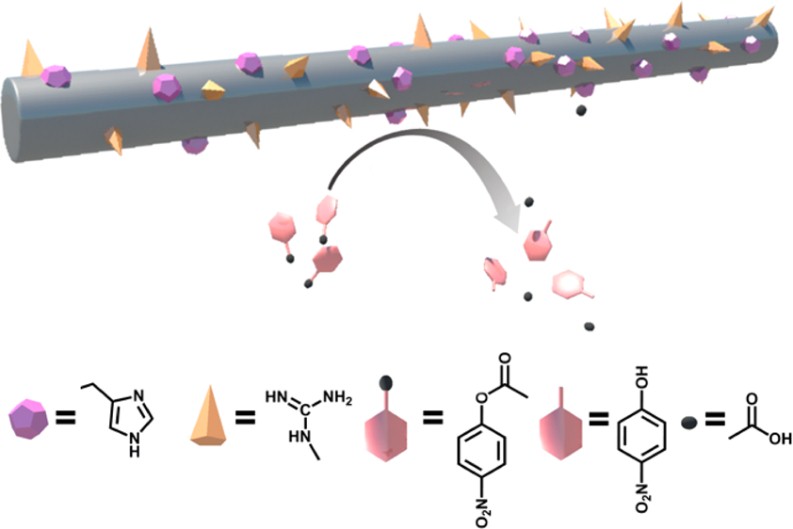Self-Assembled Peptide NanofibersThe structural arrangement of amino acid residues in a native enzyme provides a blueprint for the design of artificial enzymes. One challenge of mimicking the catalytic center of a native enzyme is how to arrange the essential amino acid residues in an appropriate position. In this study, we designed an artificial hydrolase via self-assembly of short peptides to catalyze ester hydrolysis. When the assembled hydrolase catalytic sites were embedded in a matrix of peptide nanofibers, they exhibited much higher catalytic efficiency than the peptide nanofibers without the catalytic sites, suggesting that this well-ordered nanostructure is an attractive scaffold for developing new artificial enzymes. Furthermore, the cytotoxicity of the assembled hydrolase was evaluated with human cells, and the novel artificial biological enzyme showed excellent biocompatibility. This work was recently reported by Junqiu Liu’s group in ACS Nano (ACS Nano, 2014,8, 11715-11723)
